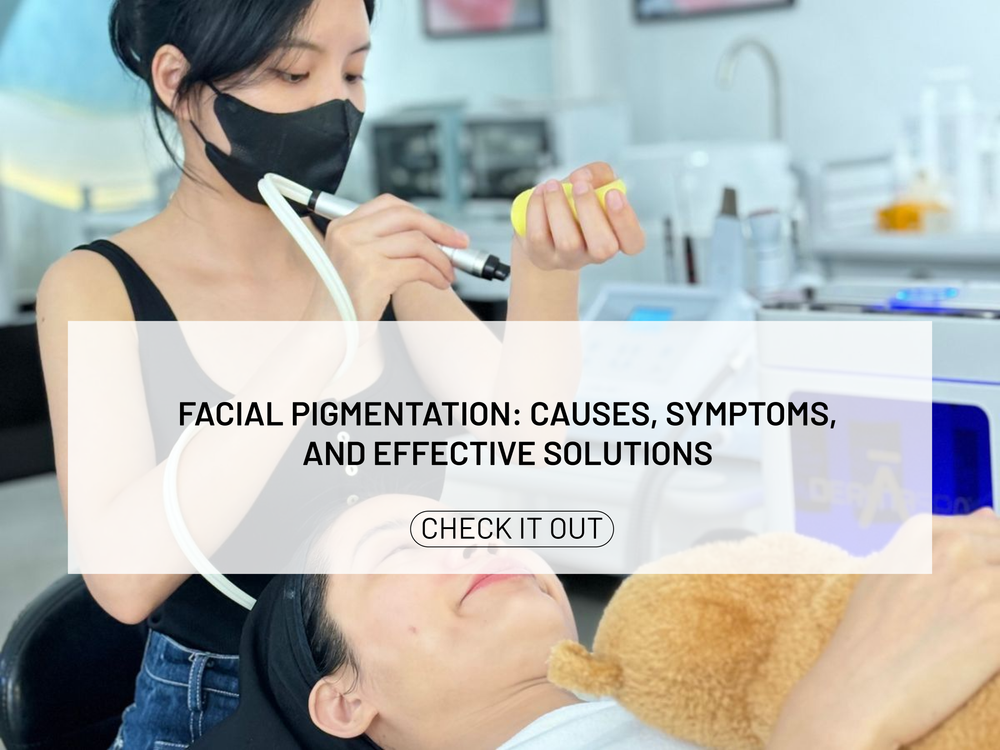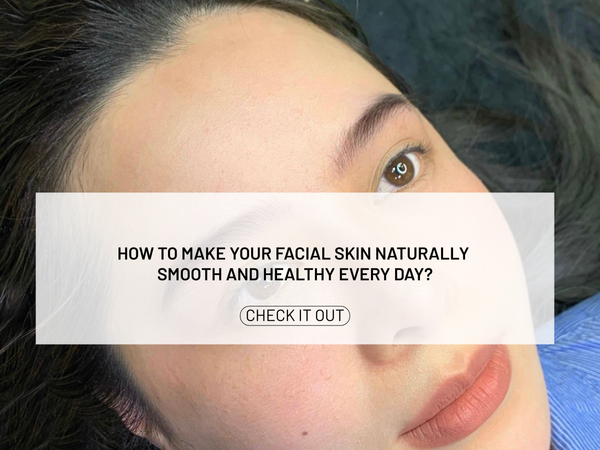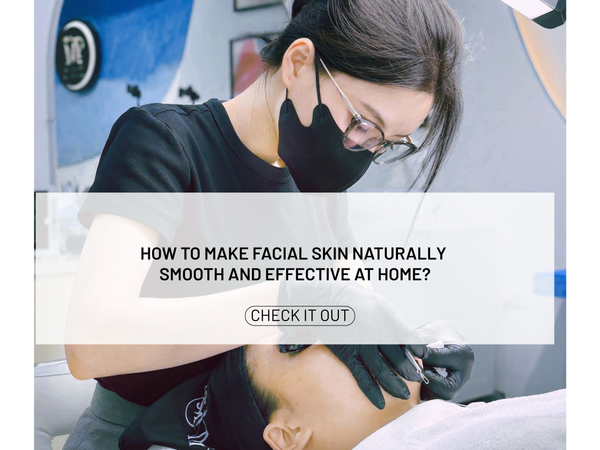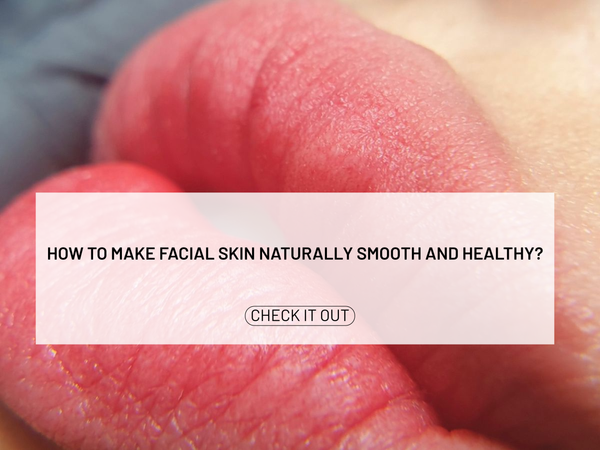Facial pigmentation: Causes, symptoms, and effective solutions
Facial pigmentation is a common issue that many people face, especially women. Pigmentation not only affects beauty but can also cause feelings of inferiority. This article will help you understand the causes, symptoms, classifications, and effective treatment methods for facial pigmentation.
Highlights
- Facial pigmentation often occurs due to exposure to sunlight.
- Hormonal changes are also a major cause of pigmentation.
- Using unsuitable cosmetics can worsen the pigmentation condition.
- There are many treatment methods such as creams, laser therapy, and chemical peels.
- Preventive measures for pigmentation include using sunscreen and a proper diet.
Causes of Facial Pigmentation

Exposure to Sunlight
One of the main causes of facial pigmentation is exposure to sunlight. When the skin is exposed to UV rays, the body produces melanin to protect the skin. However, if exposed too much, melanin will be produced excessively, leading to pigmentation.
Hormonal Changes
Hormonal changes are also an important factor. Women during pregnancy or using birth control pills often experience this condition. Hormonal changes can stimulate melanin production, causing facial pigmentation.
Using Unsuitable Cosmetics
Using unsuitable cosmetics can also lead to facial pigmentation. Some products containing harmful chemicals can damage the skin, making it more prone to pigmentation. We should carefully choose skincare products to avoid this condition.
We need to explore the causes of facial pigmentation and find effective solutions to protect our skin.
Symptoms of Facial Pigmentation

When we encounter facial pigmentation, there are some distinct symptoms that we can notice. These signs are usually very recognizable and can affect our psychology.
Appearance of Brown Spots on the Skin
- Brown spots often appear on the facial skin, especially on the cheeks and forehead.
- These spots can range in color from light brown to dark brown, depending on the severity of the pigmentation.
- Sometimes, these spots may appear symmetrically on both sides of the face.
Dry and Rough Skin
- The skin may become dry and rough, feeling less smooth than before.
- This condition can make us feel uncomfortable and insecure about our appearance.
- Regular skincare is very important to improve this condition.
Skin Easily Irritated
- Pigmented skin is often more sensitive to skincare products and cosmetics.
- We may feel itching or discomfort when using unsuitable products.
- To protect the skin, choosing safe and suitable products is essential.
These symptoms not only affect appearance but also impact our psychology. Early recognition and timely treatment will help us improve facial pigmentation more effectively.
Classification of Facial Pigmentation

Superficial Pigmentation
Superficial pigmentation is the type that appears in the epidermis of the skin. We can recognize superficial pigmentation through the following characteristics:
- Color: Light brown to dark brown.
- Border: Clear and easily distinguishable from the surrounding skin.
- Location: Often appears on the forehead, cheeks, nose, and chin.
Deep Pigmentation
Deep pigmentation lies in the dermis of the skin and has characteristics such as:
- Color: From light brown to dark black.
- Border: Faint, hard to distinguish.
- Location: Appears in small spots, commonly seen in women over 30 years old.
Mixed Pigmentation
Mixed pigmentation is a combination of superficial and deep pigmentation. Characteristics of mixed pigmentation include:
- Color: Uneven, ranging from light brown to dark brown.
- Location: Appears scattered in many areas on the face such as the forehead, cheeks, and around the eyes.
- Border: Not clear, hard to determine.
We need to understand these types of pigmentation to have effective treatment methods. Classifying facial pigmentation helps us have an overview and choose appropriate treatment methods, thereby improving skin condition most effectively.
Treatment Methods for Facial Pigmentation
Using Pigmentation Creams
We can start treating facial pigmentation by using pigmentation creams. These products often contain ingredients like hydroquinone, tranexamic acid, or vitamin C, which help brighten the skin and reduce the appearance of pigmentation. To achieve the best results, we should:
- Apply the cream regularly every day.
- Combine with moisturizing products to protect the skin.
- Consult a dermatologist to choose suitable products.
Laser Therapy
Laser therapy is one of the modern and effective methods for treating facial pigmentation. This technology helps destroy the pigments causing pigmentation while stimulating collagen production, resulting in more even and brighter skin. We need to note:
- Choose a reputable facility to perform the therapy.
- Follow the doctor's instructions.
- Protect the skin from sunlight after treatment.
Chemical Peels
Chemical peels are methods that use mild acids to remove dead skin layers, helping to brighten and improve skin condition. We can:
- Perform peels periodically to maintain effectiveness.
- Combine with other skincare products to enhance effectiveness.
- Pay attention to skin condition before performing to avoid irritation.
We need to be patient and take proper care of our skin to achieve the best results in treating facial pigmentation.
Preventive Measures for Facial Pigmentation
To protect the skin from facial pigmentation, we need to implement some effective preventive measures. Here are some simple ways we can apply daily:
Using Sunscreen
- Apply sunscreen daily, even when not going outside. UV rays from sunlight are the main cause of facial pigmentation.
- Choose products with SPF of 30 or higher for the best skin protection.
Proper Diet
- Include plenty of vegetables and fruits in your daily diet. These foods help provide essential vitamins and minerals for the skin.
- Limit fast food, greasy foods, and alcoholic beverages to keep the skin healthy.
Avoid Using Unverified Cosmetics
- We should be careful when choosing cosmetics, avoiding products without clear origins. Using low-quality cosmetics can damage the skin and cause pigmentation.
- Check the ingredients and choose products suitable for your skin type to avoid irritation.
By implementing these measures, we can minimize the risk of facial pigmentation and maintain healthy, beautiful skin.
Post-Treatment Skin Care for Pigmentation
Moisturizing the Skin
After treating pigmentation, moisturizing the skin is very important. We should:
- Use a moisturizer suitable for your skin type.
- Apply moisturizer at least twice a day.
- Choose products with natural ingredients to avoid irritation.
Avoid Sun Exposure
To protect the skin after treatment, we need to:
- Use sunscreen with SPF of 30 or higher.
- Avoid going outside during peak sunlight hours (from 10 AM to 3 PM).
- Wear a mask and a wide-brimmed hat when going outside.
Using Skin Recovery Products
We should also:
- Choose skin recovery products containing vitamins C and E.
- Use natural moisturizing masks to soothe the skin.
- Consult a doctor to choose suitable products.
Proper skincare after treating pigmentation not only helps the skin recover quickly but also prevents the recurrence of pigmentation. Remember that patience and proper care are the keys to having healthy and radiant skin!
Common Mistakes When Treating Facial Pigmentation

Not Using Sunscreen
One of the biggest mistakes we often make is not using sunscreen. Sunlight is the main cause of facial pigmentation, so protecting the skin from sunlight is very important. We should:
- Choose sunscreen with SPF of 30 or higher.
- Apply sunscreen at least 30 minutes before going outside.
- Reapply sunscreen every 2 hours if staying outdoors for a long time.
Overusing Cosmetics
Many of us tend to use too many skincare products, hoping to see results quickly. However, this can cause irritation and worsen pigmentation. To avoid this, we should:
- Choose products suitable for our skin type.
- Avoid combining too many products with strong active ingredients.
- Follow a simple and effective skincare routine.
Lack of Patience in the Treatment Process
Treating facial pigmentation is a long process that requires patience. Many people often give up when they do not see immediate results. To achieve the best results, we need to:
- Follow the doctor's or expert's instructions.
- Monitor the skin condition and adjust the method if necessary.
- Remember that patience will yield better results in treating facial pigmentation.
When treating facial pigmentation, many people often make common mistakes. This not only reduces effectiveness but can also harm the skin. To avoid these mistakes, learn carefully and consult experts. If you want to know more information and skincare tips, please visit our website for detailed advice!
Conclusion
Facial pigmentation is a common issue that many people face, especially women. To protect the skin from this condition, understanding the causes and symptoms is very important. We need to choose suitable skincare products and maintain a healthy lifestyle. If you notice signs of pigmentation, stop using suspected products immediately and find ways to soothe the skin. Take care of and listen to your skin to achieve natural and healthy beauty.
Frequently Asked Questions
What is facial pigmentation?
Facial pigmentation is the condition of brown or gray spots appearing on the skin, commonly found on the cheeks, forehead, and chin.
What causes facial pigmentation?
Facial pigmentation can be caused by many factors such as exposure to sunlight, hormonal changes, or using unsuitable cosmetics.
What are the symptoms of facial pigmentation?
The main symptom is the appearance of brown spots symmetrically on the face, usually seen on the cheeks and forehead.
Are there effective ways to treat facial pigmentation?
There are many treatment methods such as using creams, laser therapy, or chemical peels, depending on the specific condition.
How can I prevent facial pigmentation?
To prevent pigmentation, you should use sunscreen daily, maintain a healthy diet, and avoid sun exposure during peak hours.
Can facial pigmentation go away on its own?
In some cases, pigmentation may reduce on its own but usually requires treatment for the best results.



